- Home
- Wendell Berry
Bringing It to the Table: On Farming and Food Page 16
Bringing It to the Table: On Farming and Food Read online
Page 16
Fourth year: Clover and timothy (two cuttings).
Fifth year: Back to corn.
This pattern is varied in two ways. Where alfalfa is sowed instead of clover, the field is left in sod for three or four years instead of two. And when rye is sowed instead of barley, the rye is flail-chopped in the bloom and baled for bedding, and the land is returned to silage corn the same year.
The whole farm is covered with manure each year, at a rate, Mr. Lapp figures, of about eight tons per acre. And care is taken to get the manure on at the right time. I ask if this use of manure did not reduce the need for commercial fertilizer. “I don’t buy any fertilizer,” Mr. Lapp says. (He does use an herbicide on his cornfields, but only because the time when corn needs cultivation is also the time when he is busiest with tours.)
The present system of rotation and fertilization has been in use on this farm, Mr. Lapp says, “as long as I remember.” But he himself, with the county agent’s help, laid the farm off in three-acre strips to help control runoff and erosion. Yet even though soil conservation can to a considerable extent be formalized in set patterns of layout and rotation, there is still a need for vigilance and intelligent improvisation. This fall, for instance, the barley is coming on too late to provide good winter protection. As a remedy, Mr. Lapp says, he will cover the barley fields with strawy manure on the first morning the ground is frozen. That will protect the fields through the winter without smothering the barley.
One of the best ways to measure the quality of soil husbandry and the richness of soil on a farm is to look at its first-year hayfields. How quickly will clover and grass make a sod after the land has been row cropped? How healthy and productive is it? The height, density, color, and uniformity of the plants all have a tale to tell. Mr. Lapp leads the way up past his garden to a four-acre hayfield that is good in all respects. It was sowed in the spring to red clover, timothy, and a little alsike for the bees. The barley was taken off in July. And then in early October the field was mowed for hay, yielding 400 bales. Next year, it may reasonably be expected to yield 800-1,000 bales on the first cutting, and 500-600 on the second.
TWO KINDS OF HORSEPOWER
WHEN ELMER LAPP was still just a boy, his father, recognizing a gift in him, gave him the colts to work.
“Made you a little proud?” I say.
He grins and nods. “I guess it did a little bit.”
Because he is a capable horseman and likes horses, he has never quit using them—although he has certain uses for a tractor as well. “I’d rather drive horses than a tractor,” he says. “I have them here, they’re eating, so I might as well use them. I’m doing my work while I’m having pleasure. If I didn’t enjoy it I wouldn’t do it.”
He uses a tractor for what a tractor does best, and horses for what they do best, keeping in mind always the scale of his operation. “On a small farm,” he says, “you don’t need expensive equipment.” And he seems immune to the horsepower intoxication that leads so many small farmers to buy larger tractors then they need. He paid $2,000 for a John Deere 60 twenty years ago, and is still using it. It will pull a three-bottom plow. When he needs a tractor for an occasional heavier job, such as silo filling, he hires a larger one. He does all his plowing and hay baling with his tractor, and uses it to load manure. He uses his horses to spread manure, plant corn, clip pasture, rake and haul hay. If he is “not pushed too hard,” he uses them also in seedbed preparation. He is sure that he gets this work done cheaper with horses than with a tractor—even setting aside the value of their colts.
He says that rubber-tired equipment is far easier on horses than the steel-tired, because the tires absorb much of the shock when working over rough ground. And he dislikes wide hitches largely because they too are hard on horses. On an eight-foot tandem disk he will hitch two in front and three behind—or, if the footing is solid and the going relatively easy, he will work as many as four abreast. He says that he sees far too much mistreatment of horses through ignorance and indifference—something he resents and tries, so far as he can, to correct.
The use of the horses, whose feed is grown on the farm, greatly extends Mr. Lapp’s dependence on solar energy, and greatly reduces his dependence on increasingly expensive fossil fuel energy. The tractor is used to supplement the energy already available on the farm.
In addition to the two varieties of horsepower, the farm makes a small use of waterpower. The stream is dammed and the impounded water used to turn a small water wheel which, in turn, works a water pump. It is another manifestation of this farm’s thriftiness. Mr. Lapp looks at the escaping water with some regret: “That’s all going to waste.”
A WELL-PLANNED BARN
THE LAPPS ARE just completing a small barn that is a good example of the care and the sense of order that have gone into the making of their farm.
This is a “bank barn” with a drive-in loft, approximately thirty by forty-eight feet. The lower story is a feeding area that will accommodate five hundred guineas in the summer and twelve heifers and perhaps as many young horses in the winter. It is divided across the middle by a feed bunk which extends out into a lot.
The upper story will have a corn crib across each end, eight feet wide by fourteen deep. The area in the center will be for storage of hay and equipment. The cribs are to be ventilated by lattices along the lower part of the outside walls. Outside, these lattices will be sheltered by awnings, four feet wide on one end, but on the other end ten feet wide to provide yet more shelter for equipment.
All possibilities of site, shape, and use have been considered.
THE ECOLOGICAL PATTERN
CONCERNED AS HE is that the usable be put to use, that there be no waste, still there is nothing utilitarian or mechanistic about Mr. Lapp’s farm—or his mind. His aim, it seems, is not that the place should be put to the fullest use, but that it should have the most abundant life. The best farmers, Sir Albert Howard said, imitate nature, not least in the love of variety. Elmer Lapp answers to that definition as fully as any farmer I have encountered. Like nature herself, he and his family seem preoccupied with the filling of niches.
Driving into the place, one is aware before anything else that wherever flowers can be grown flowers are growing; beds and borders are everywhere. The barn swallow nests in the milking barn are not there just by happenstance; little wooden steps have been nailed to the joists to encourage them to nest there. Elmer Lapp has defended them against milk inspectors—“If those barn swallows go, I’m going somewhere else with my milk”—and against the cats, which he pens up during the nesting season, “if they get nasty.”
Among the wild creatures, he seems especially partial to birds. Wild waterfowl make themselves peacefully at home along his pasture stream, and he speaks of his failure to attract martins with obvious grief. One can justify the existence of birds by “insect control,” but one can also like them. Elmer Lapp likes them. His one acknowledged regret about his place is that it doesn’t have a woodlot. He could use the firewood; he would also like the wild creatures it would attract. Above his row of bee-hives is a border of sudan grass that he has let go to seed for the birds.
He likes too the buff Cochin bantams that live in the milking barn and the stable—they scatter the manure piles and so keep flies from hatching—and the goldfish who live in the drinking trough and keep the water clean. Walking around the place, I keep being surprised by some other creature that has found room and board there, and is contributing a little something—maybe only pleasure—in return: peafowl, wild turkeys, pigeons, a pair of bobwhites.
For a man giftedly practical, Mr. Lapp justifies what he has and does remarkably often by his likes. One finally realizes that on the Lapp farm one is surrounded by an abounding variety of lives that are there, and are thriving there, because Elmer Lapp likes them. And from that it is only a step to the realization that the commercial enterprises of the farm are likewise there, and thriving, because he likes them too. The Belgians and the Guernseys are profitable, in large pa
rt, because they were liked before they were profitable. Mr. Lapp is as fine a farmer as he is because liking has joined his intelligence intricately to his place.
And that is why the place makes sense. All the patterns of the farm are finally gathered into an ecological pattern; it is one “household,” its various parts joined to each other and the whole joined to nature, to the world, by liking, by delighted and affectionate understanding. The ecological pattern is a pattern of pleasure.
ON The Soil and Health
(2006)
IN 1964 MY wife Tanya and I bought a rough and neglected little farm on which we intended to grow as much of our own food as we could. My editor at the time was Dan Wickenden who was an organic gardener and whose father, Leonard Wickenden, had written a practical and inspiring book, Gardening with Nature, which I bought and read. Tanya and I wanted to raise our own food because we liked the idea of being independent to that extent, and because we did not like the toxicity, expensiveness, and wastefulness of “modern” food production. Gardening with Nature was written for people like us, and it helped us to see that what we wanted to do was possible. I asked Dan where his father’s ideas had come from, and he gave me the name of Sir Albert Howard. My reading of Howard, which began at that time, has never stopped, for I have returned again and again to his work and his thought. I have been aware of his influence in virtually everything I have done, and I don’t expect to graduate from it. That is because his way of dealing with the subject of agriculture is also a way of dealing with the subject of life in this world. His thought is systematic, coherent, and inexhaustible.
Sir Albert Howard published several books and also many articles in journals of agricultural science. The two of his books that are best known were addressed both to general readers and to his fellow scientists: An Agricultural Testament and The Soil and Health. He was born in 1873 to a farming family in Shropshire, and he died in 1947.
An Agricultural Testament and The Soil and Health are products of Howard’s many years as a government scientist in India, during which he conceived, and set upon a sound scientific footing, the kind of agriculture to which his followers have applied the term “organic.” But by 1940, when the first of these books was published, the industrialization of agriculture had already begun. By 1947, when The Soil and Health was published, World War II had proved the effectiveness of the mechanical and chemical technology that in the coming decades would radically alter both the practice of agriculture and its underlying assumptions.
This “revolution” marginalized Howard’s work and the kind of agriculture he advocated. So-called organic agriculture survived only on the margin. It was practiced by some farmers of admirable independence and good sense and also by some authentic nuts. In the hands of the better practitioners, it was proven to be a healthful, productive, and economical way of farming. But while millions of their clients spent themselves into bankruptcy on industrial supplies, the evangelists of industrial agriculture in government and the universities ignored the example of the successful organic farmers, just as they ignored the equally successful example of Amish farming.
Meanwhile, Howard’s thought, as manifested by the “organic movement,” was seriously oversimplified. As it was understood and prescribed, organic agriculture improved the health of crops by building humus in the soil, and it abstained from the use of toxic chemicals. There is nothing objectionable about this kind of agriculture, so far as it goes, but it does not go far enough. It does not conceive of farms in terms of their biological and economic structure, because it does not connect farming with its ecological and social contexts. Under the current and now official definition of organic farming, it is possible to have a huge “organic” farm that grows only one or two crops, has no animals or pastures, is entirely dependent on industrial technology and economics, and imports all its fertility and energy. It was precisely this sort of specialization and oversimplification that Sir Albert Howard worked and wrote against all his life.
At present this movement (if we can still apply that term to an effort that is many-branched, multicentered, and always in flux) in at least some of its manifestations appears to be working decisively against such oversimplification and the industrial gigantism that oversimplification allows. Some food companies as well as some consumers now understand that only the smaller family farms, such as those of the Amish, permit the diversity and the careful attention that Howard’s standards require.
HOWARD’S FUNDAMENTAL ASSUMPTION was that the processes of agriculture, if they are to endure, have to be analogous to the processes of nature. If one is farming in a place previously forested, then the farm must be a systematic analogue of the forest, and the farmer must be a student of the forest. Howard stated his premise as a little allegory:The main characteristic of Nature’s farming can … be summed up in a few words. Mother earth never attempts to farm without live stock; she always raises mixed crops; great pains are taken to preserve the soil and to prevent erosion; the mixed vegetable and animal wastes are converted into humus; there is no waste; the processes of growth and the processes of decay balance one another; ample provision is made to maintain large reserves of fertility; the greatest care is taken to store the rainfall; both plants and animals are left to protect themselves against disease.1
Nature is the ultimate value of the practical or economic world. We cannot escape either it or our dependence on it. It is, so to speak, its own context, whereas the context of agriculture is, first, nature and then the human economy. Harmony between agriculture and its natural and human contexts would be health, and health was the invariable standard of Howard’s work. His aim always was to treat “the whole problem of health in soil, plant, animal, and man as one great subject.”2 And Louise Howard spells this out in Sir Albert Howard in India: A fertile soil, that is, a soil teeming with healthy life in the shape of abundant microflora and microfauna, will bear healthy plants, and these, when consumed by animals and man, will confer health on animals and man. But an infertile soil, that is, one lacking sufficient microbial, fungous, and other life, will pass on some form of deficiency to the plant, and such plant, in turn, will pass on some form of deficiency to animal and man.3
This was Howard’s “master idea” and he understood that it implied a long-term research agenda, calling for “a boldly revised point of view and entirely fresh investigations.”4
His premise, then, was that the human economy, which is inescapably a land-using economy, must be constructed as an analogue of the organic world, which is inescapably its practical context. And so he was fundamentally at odds with the industrial economy, which sees creatures, including humans, as machines, and agriculture, like ultimately the entire human economy, as an analogue of an industrial system. This was, and is, the inevitable and characteristic product of the dead-end materialism that is the premise of both industrialism and the science that supports it.
Howard understood that such reductionism could not work for agriculture:But the growing of crops and the raising of live stock belong to biology, a domain where everything is alive and which is poles asunder from chemistry and physics. Many of the things that matter on the land, such as soil fertility, tilth, soil management, the quality of produce, the bloom and health of animals, the general management of live stock, the working relations between master and man, the esprit de corps of the farm as a whole, cannot be weighed or measured. Nevertheless their presence is everything: their absence spells failure.5
This understanding has a scientific basis, as it should have, for Howard was an able and conscientious scientist. But I think it comes also from intuition, and probably could not have come otherwise. Howard’s intuition was that of a man who was a farmer by birth and heritage and who was a sympathetic as well as a scientific observer of the lives of plants, animals, and farmers.
IF THE FARM is to last—if it is to be “sustainable,” as we now say—then it must waste nothing. It must obey in all its processes what Howard called “the law of return.�
� Under this law, agriculture produces no waste; what is taken from the soil is returned to it. Growth must be balanced by decay: “In this breaking down of organic matter we see in operation the reverse of the building-up process which takes place in the leaf.”6
The balance between growth and decay is the sole principle of stability in nature and in agriculture. And this balance is never static, never finally achieved, for it is dependent upon a cycle, which in nature, and within the limits of nature, is self-sustaining, but which in agriculture must be made continuous by purpose and by correct methods. “This cycle,” Howard wrote, “is constituted of the successive and repeated processes of birth, growth, maturity, death, and decay.”7
The interaction, the interdependence, of life and death, which in nature is the source of an inexhaustible fecundity, is the basis of a set of analogies, to which agriculture and the rest of the human economy must conform in order to endure, and which is ultimately religious, as Howard knew: “An eastern religion calls this cycle the Wheel of Life . . . Death supersedes life and life rises again from what is dead and decayed.”8
The maintenance of this cycle is the practical basis of good farming and its moral basis as well:[T]he correct relation between the processes of growth and the processes of decay is the first principle of successful farming. Agriculture must always be balanced. If we speed up growth we must accelerate decay. If, on the other hand, the soil’s reserves are squandered, crop production ceases to be good farming: it becomes something very different. The farmer is transformed into a bandit.9
IT SEEMS TO me that Howard’s originating force, innate in his character and refined in his work, was his sense of context. This made him eminent and effective in his own day, and it makes his work urgently relevant to our own. He lacked completely the specialist impulse, so prominent among the scientists and intellectuals of the present-day university, to see things in isolation.

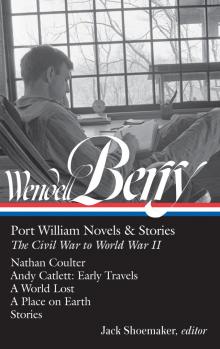 The Selected Poems of Wendell Berry
The Selected Poems of Wendell Berry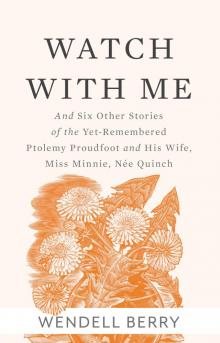 Watch With Me
Watch With Me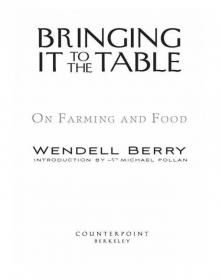 Bringing It to the Table: On Farming and Food
Bringing It to the Table: On Farming and Food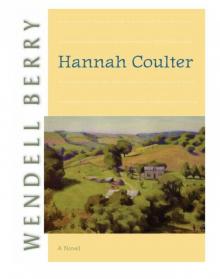 Hannah Coulter
Hannah Coulter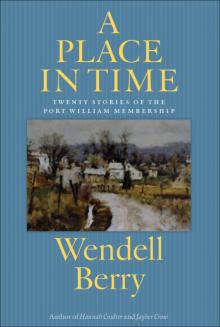 A Place in Time: Twenty Stories of the Port William Membership
A Place in Time: Twenty Stories of the Port William Membership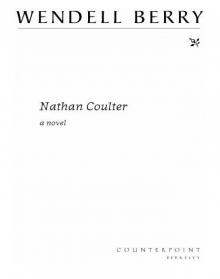 Nathan Coulter
Nathan Coulter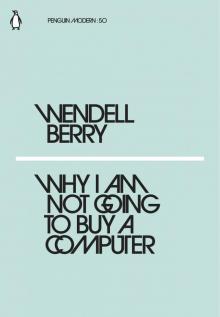 Why I Am Not Going to Buy a Computer
Why I Am Not Going to Buy a Computer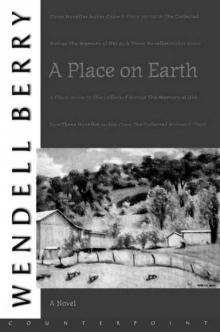 A Place on Earth
A Place on Earth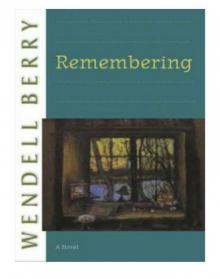 Remembering
Remembering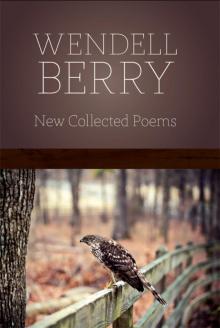 New Collected Poems
New Collected Poems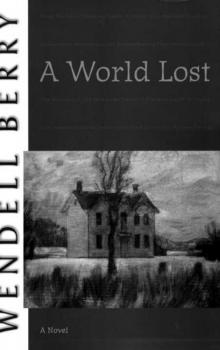 A World Lost
A World Lost Wendell Berry
Wendell Berry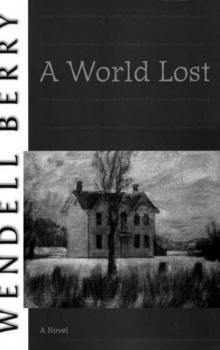 A World Lost: A Novel (Port William)
A World Lost: A Novel (Port William)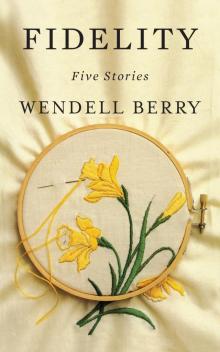 Fidelity
Fidelity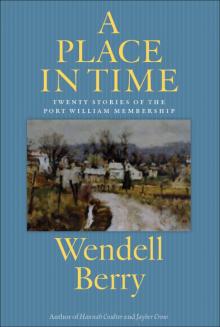 A Place in Time
A Place in Time